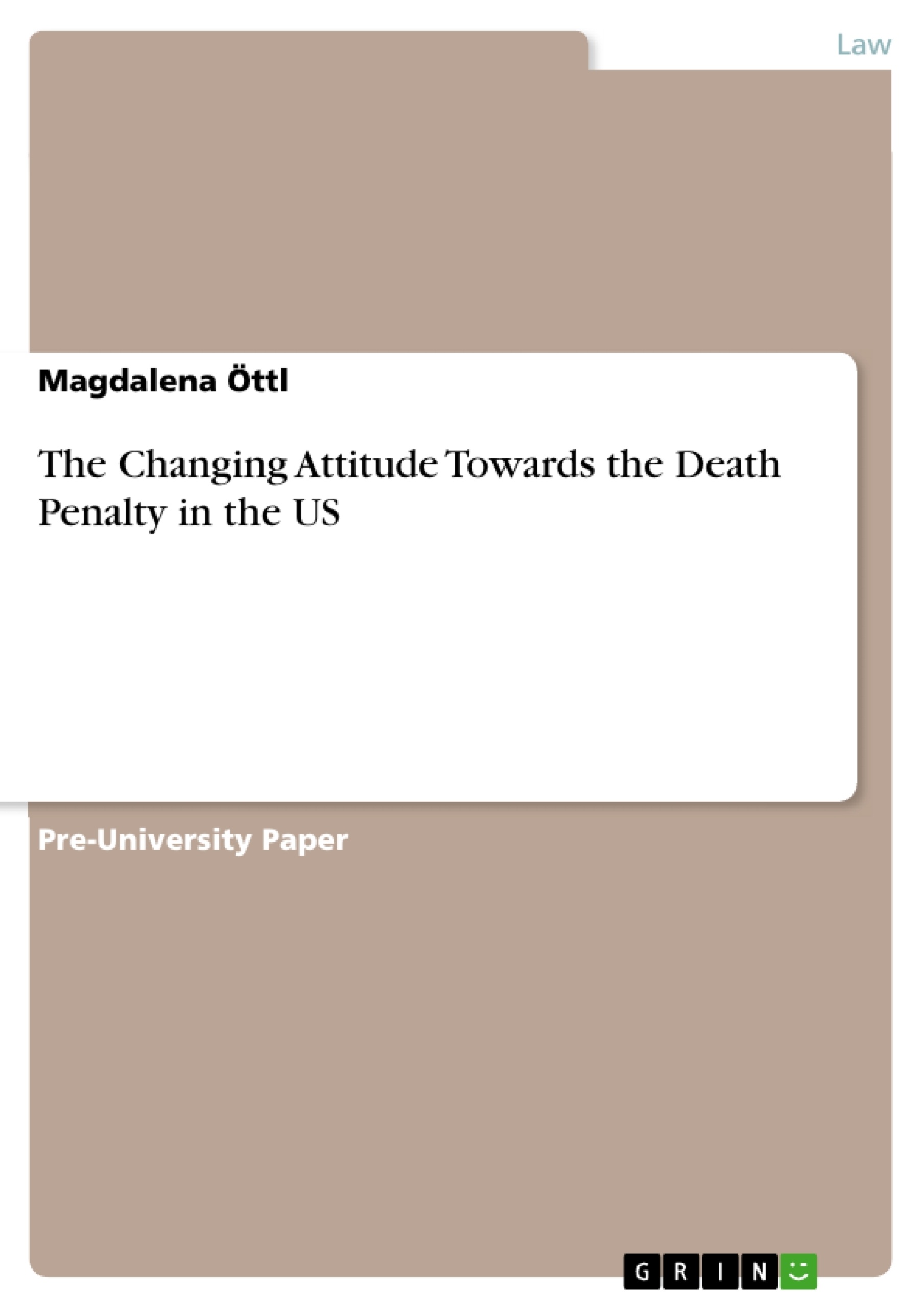The aim of this paper is to describe to what extend the public opinion about capital punishment in the United States has changed and to outline the reasons for that. Based on the hypothesis that support has generally dropped, this paper provides an overview why and when support slowly started to decrease. The examinations are limited to approximately the last twenty-five years, and the three main chapters are structured according to the time periods of the then-ruling presidents. They respectively comprise information about the president’s death penalty policy, the changes in law, some incidents that have occurred, as well as the development in people’s attitude. Consequently, it can be concluded that more and more Americans oppose the death penalty as the system’s fallibility and inefficiency are becoming obvious. However, while moral positions have not changed significantly, the impossible flawlessness and expensive application of the death penalty triggered many shifts in opinion.
Inhaltsverzeichnis (Table of Contents)
- Abstract
- Table of Contents
- Introduction
- General Information
- Americans Attitude in the Clinton Administration
- Clinton's Attitude Towards the Death Penalty
- Changes in Law
- Violent Crime Control and Law Enforcement Act
- Antiterrorism and Effective Death Penalty Act
- Incidents
- Gary Graham
- Ronnie Burrell
- Brian Baldwin
- Karla Faye Tucker
- "Dead Man Walking"
- Demand of the American Bar Association
- Public Opinion on the Death Penalty
- Americans Attitude in the Bush Administration
- Bush's Attitude Towards the Death Penalty
- Changes in Law
- Incidents
- Timothy McVeigh
- The Innocent Project and Curtis McCarty
- The Death Row Ten
- Lethal Injection Debate
- Public Opinion on the Death Penalty
- Americans Attitude in the Obama Administration
- Obama's Attitude Towards the Death Penalty
- Changes in Law
- Incidents
- Glenn Ford
- Dzhokhar Tsarnaev and the Ongoing Lethal Injection Problem
- Racial Disparity
- "The 2% Death Penalty"
- Public Opinion on the Death Penalty
- Conclusion
- Bibliography
Zielsetzung und Themenschwerpunkte (Objectives and Key Themes)
This paper aims to examine the changing public opinion towards the death penalty in the United States over the past twenty-five years. The paper hypothesizes that support for capital punishment has generally declined, exploring the reasons and timeline of this shift. It analyzes the death penalty landscape during the tenures of the last three presidents, focusing on changes in legislation, notable events, and public sentiment.
- The changing attitude of the American public towards the death penalty.
- The impact of events, legal changes, and political figures on public opinion.
- The role of the death penalty's potential for error and its costs in influencing public perception.
- The emergence of debates surrounding the death penalty's application and methodology.
- The influence of specific incidents and legal cases on public opinion towards capital punishment.
Zusammenfassung der Kapitel (Chapter Summaries)
The paper is divided into three main chapters, each focusing on the death penalty's trajectory under a specific president: Clinton, Bush, and Obama. Each chapter delves into the president's stance on capital punishment, significant legislative changes, notable incidents and cases, and public opinion trends during their respective terms. The analysis highlights how the death penalty's application, its potential for error, and its costs have contributed to shifting public sentiment.
Schlüsselwörter (Keywords)
This paper explores the changing public perception of the death penalty in the United States, focusing on key themes such as capital punishment, public opinion, legal changes, political figures, and notable incidents. It also highlights the role of the death penalty's fallibility, inefficiency, and costs in shaping public opinion.
- Arbeit zitieren
- Magdalena Öttl (Autor:in), 2016, The Changing Attitude Towards the Death Penalty in the US, München, GRIN Verlag, https://www.grin.com/document/956801



